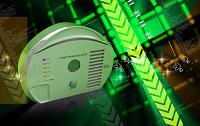
By taking a few moments to assess your existing carbon monoxide (CO) detectors, you can easily improve the safety and well-being of yourself and your household.
The importance of carbon monoxide detectors
Carbon monoxide is a colorless, odorless gas produced as a by-product by any number of household appliances such as furnaces, gas dryers and gas stoves that operate on the principles of combustion. Problems with any of these devices can result in a leak of the toxic gas, which is highly poisonous to humans and can lead to death.
Because the symptoms of carbon monoxide poisoning are highly similar to the onset of the flu, it can be nearly impossible to detect that anything is wrong -- until it is too late. It is for this very reason that it is critical that all homes are equipped with adequate and functioning carbon monoxide detectors.
Getting the most out of carbon monoxide detectors
It is recommended that homeowners equip their homes with a minimum of one carbon monoxide detector per floor, and especially near sleeping areas. Detectors should also be placed high up on walls, because carbon monoxide shares a similar specific gravity (weight) to air and will therefore rise with circulating heat. To avoid false alarms, however, do not place detectors within 5 feet of carbon-monoxide producing appliances.
Simply having detectors isn't enough. It is vital that you make a point of testing your detectors regularly for functionality. By pressing and holding the test button on the device, you can rest assured that your detector will work in your hour of need. And it's a good idea to check all of your carbon monoxide detectors twice a year during time changes, and replace batteries as needed.
For more advice on carbon monoxide detectors, contact the professionals at Rodenhiser Plumbing, Heating & Air Conditioning. We proudly serve the Route 495/128 area of Massachusetts.
Image via Shutterstock.com